Nanotechnology and sunlight clear the way for better visibility
 A new coating prevents fogging on transparent surfaces. Rather than using electricity, the coating relies on sunlight to heat the surface.
A new coating prevents fogging on transparent surfaces. Rather than using electricity, the coating relies on sunlight to heat the surface.
Mar 5th, 2019
Read more
 A new coating prevents fogging on transparent surfaces. Rather than using electricity, the coating relies on sunlight to heat the surface.
A new coating prevents fogging on transparent surfaces. Rather than using electricity, the coating relies on sunlight to heat the surface.
Mar 5th, 2019
Read more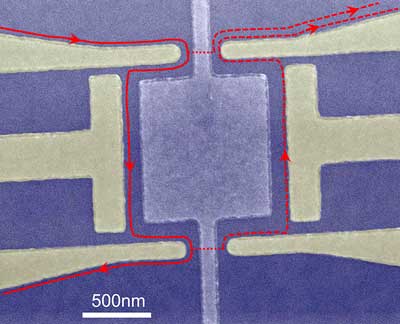 Fractional Quantum Hall quasiparticles experimentally shown to interfere.
Fractional Quantum Hall quasiparticles experimentally shown to interfere.
Mar 5th, 2019
Read more Non-inasive terahertz sensing could be a game changer for future diagnostics.
Non-inasive terahertz sensing could be a game changer for future diagnostics.
Mar 5th, 2019
Read more Growing material directly onto substrates and recycling chip patterns should enable faster, simpler manufacturing.
Growing material directly onto substrates and recycling chip patterns should enable faster, simpler manufacturing.
Mar 5th, 2019
Read more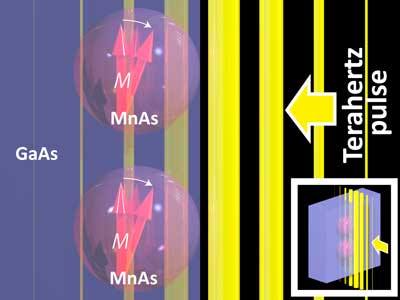 Researchers created a nanoscale spintronic semiconductor device that can partially switch between specific magnetic states trillions of times a second (terahertz), far beyond frequencies of devices at present.
Researchers created a nanoscale spintronic semiconductor device that can partially switch between specific magnetic states trillions of times a second (terahertz), far beyond frequencies of devices at present.
Mar 5th, 2019
Read more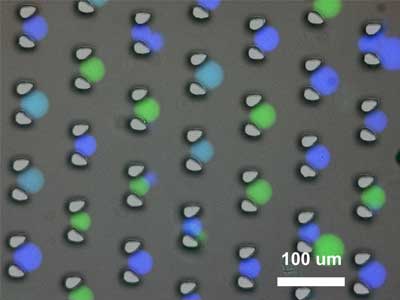 The work provides a step towards chemical cognition in synthetic protocells and could be useful in biosensing and therapeutics.
The work provides a step towards chemical cognition in synthetic protocells and could be useful in biosensing and therapeutics.
Mar 4th, 2019
Read more In a new study, scientists explore a surprising property of proteins -- one that has only recently come to light. The group demonstrates electrical conductance through proteins poised between a pair of electrodes.
In a new study, scientists explore a surprising property of proteins -- one that has only recently come to light. The group demonstrates electrical conductance through proteins poised between a pair of electrodes.
Mar 4th, 2019
Read more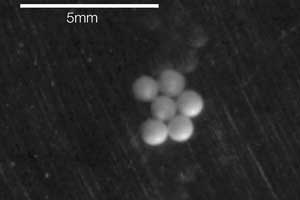 Researchers have levitated particles using sound in an experiment which could have applications in soft robotics and help reveal how planets start to form.
Researchers have levitated particles using sound in an experiment which could have applications in soft robotics and help reveal how planets start to form.
Mar 4th, 2019
Read more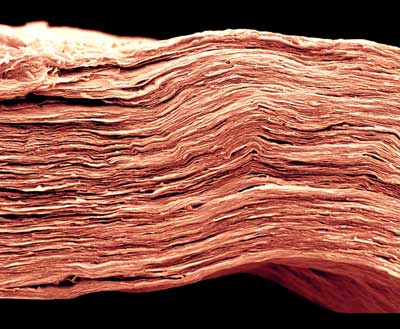 Scientists have discovered a way to improve the energy density of promising energy-storage materials, conductive two-dimensional ceramics called MXenes.
Scientists have discovered a way to improve the energy density of promising energy-storage materials, conductive two-dimensional ceramics called MXenes.
Mar 4th, 2019
Read more Researchers have found a way to pre-treat a laser beam so that it enters opaque surfaces without dispersing - like a headlight that's able to cut through heavy fog at full strength.
Researchers have found a way to pre-treat a laser beam so that it enters opaque surfaces without dispersing - like a headlight that's able to cut through heavy fog at full strength.
Mar 4th, 2019
Read more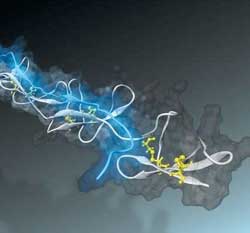 The optical nanosensors' operating principle is based on the interaction of light in thin films: a similar effect can be observed in soap bubbles. Such sensors can be quickly manufactured using an inkjet printer and special ink made of titanium dioxide.
The optical nanosensors' operating principle is based on the interaction of light in thin films: a similar effect can be observed in soap bubbles. Such sensors can be quickly manufactured using an inkjet printer and special ink made of titanium dioxide.
Mar 4th, 2019
Read more A new quantum sensor has proven it can outperform existing technologies and promises significant advancements in long-range 3D imaging and monitoring the success of cancer treatments.
A new quantum sensor has proven it can outperform existing technologies and promises significant advancements in long-range 3D imaging and monitoring the success of cancer treatments.
Mar 4th, 2019
Read more Unique Weyl semimetal delivers largest intrinsic conversion of light to electricity.
Unique Weyl semimetal delivers largest intrinsic conversion of light to electricity.
Mar 4th, 2019
Read more A research team has created a nanoscale 'playground' on a chip that simulates the formation of exotic magnetic particles called 'monopoles'. The study could unlock the secrets to ever-smaller, more powerful memory devices, microelectronics, and next-generation hard drives that employ the power of magnetic spin to store data.
A research team has created a nanoscale 'playground' on a chip that simulates the formation of exotic magnetic particles called 'monopoles'. The study could unlock the secrets to ever-smaller, more powerful memory devices, microelectronics, and next-generation hard drives that employ the power of magnetic spin to store data.
Mar 4th, 2019
Read more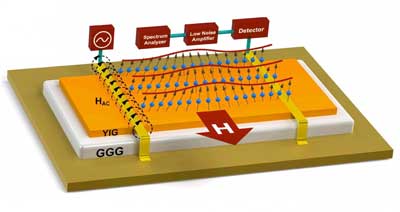 Magnonic devices of the future could use low power to avoid performance losses.
Magnonic devices of the future could use low power to avoid performance losses.
Mar 4th, 2019
Read more A physicist has shown for the first time that the Casimir force can be reversed and made repulsive, tunable or enhanced, based on the material inserted in between the plates.
A physicist has shown for the first time that the Casimir force can be reversed and made repulsive, tunable or enhanced, based on the material inserted in between the plates.
Mar 4th, 2019
Read more